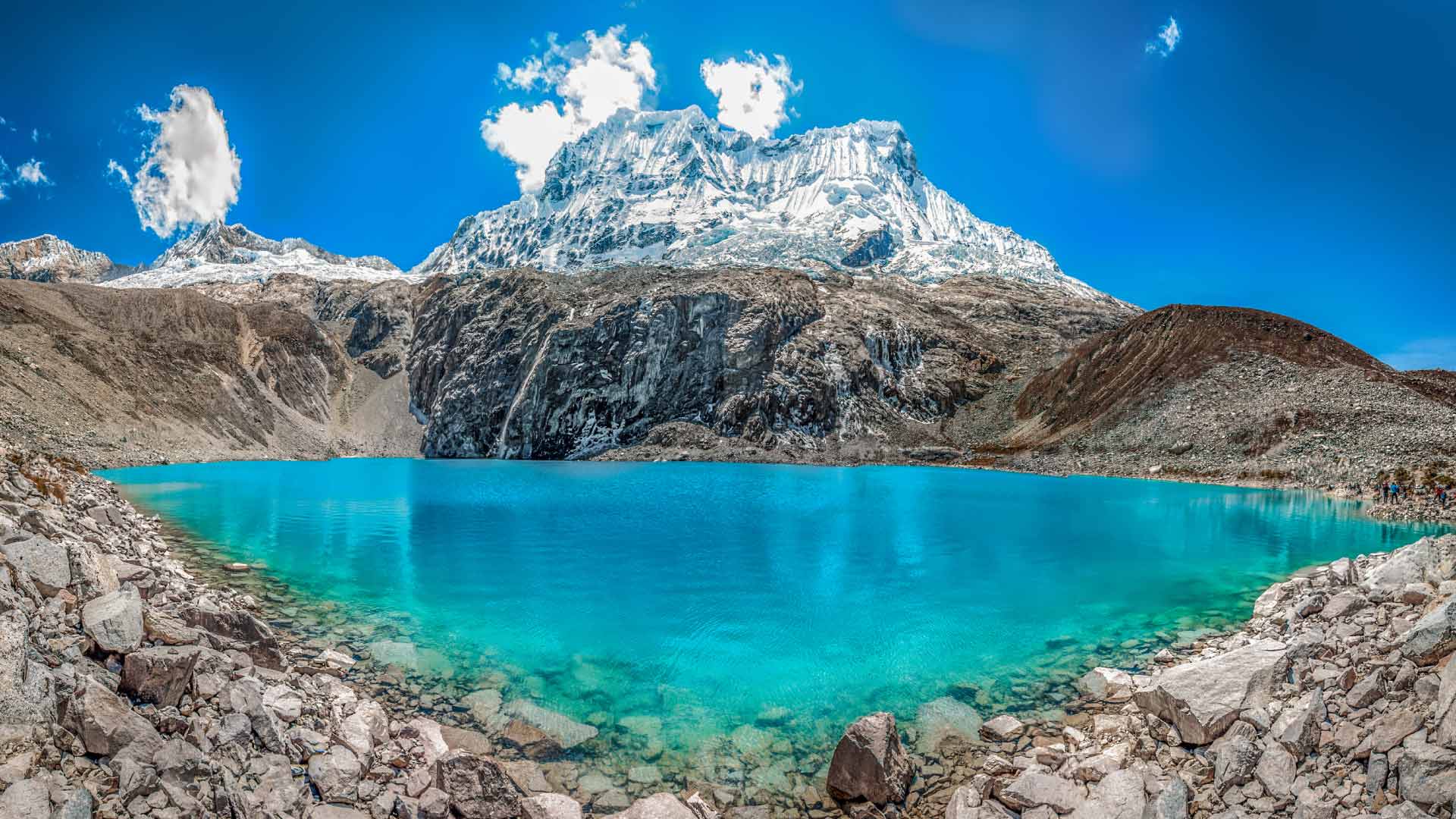Visit Huascarán National Park: Glaciers, Lakes & Peaks in the Heart of the Andes
Introduction to Huascaran National Park
Hola, adventurer! Welcome to Huascarán National Park, a spectacular landscape of glacial lakes, towering peaks, and Andean wildlife nestled high in the Cordillera Blanca of Peru. As your guide, I promise this park is more than just a hiking destination—it’s a sacred meeting point between nature, culture, and legend.
Spanning over 340,000 hectares, this UNESCO World Heritage Site is home to Peru’s highest mountain, Huascarán (6,768 m / 22,205 ft), as well as deep valleys, prehistoric ruins, and over 660 glaciers. If you crave adventure, photography, or peaceful nature walks, this place is nothing short of breathtaking.
📍 Where

is Huascarán National Park?
Huascarán National Park is located in the Ancash Region of northern Peru, within the Cordillera Blanca, the world’s highest tropical mountain range.
🌄 Nearby Cities:
Huaraz – Main gateway and base for most travelers (7–8 hrs from Lima)
Carhuaz, Yungay, and Caraz – Smaller towns closer to specific park entrances
🏆 Why Visit Huascarán National Park?
This is one of the most biodiverse and geologically stunning protected areas in South America. Reasons to visit:
✅ See Peru’s tallest mountain: Mount Huascarán
✅ Hike to Laguna 69, one of the world’s most scenic alpine lakes
✅ Explore ancient Puya Raimondii forests
✅ Spot Andean condors, spectacled bears, and vicuñas
✅ Discover hidden Inca and pre-Inca archaeological sites
✅ Experience remote Andean villages and local Quechua culture
🏕️ Top Attractions in Huascarán National Park
1. 🏔️ Mount Huascarán
Tallest mountain in Peru
Popular with experienced mountaineers and ice climbers
Requires permits and specialized guides for ascents
2. 💙 Laguna 69
The most famous one-day hike in the park
Elevation: 4,600 m (15,100 ft)
Trail distance: 12 km round-trip
Surreal blue waters backed by glacier walls—an Instagram favorite
3. 🧭 Pastoruri Glacier
One of the few accessible glaciers by car in Peru
Offers insights into climate change
Short walk to the glacier face with dramatic views
4. 🌿 Puya Raimondii Forests
Home to the world’s tallest flowering plant (up to 15 m tall)
Only blooms once every 80–100 years
Located near Pachacoto or Catac
5. 🏛️ Chavín de Huantar
UNESCO-listed pre-Inca temple complex
Accessible as a day trip from Huaraz
Combines natural wonder with ancient culture
🥾 Hiking and Trekking Routes
⛰️ Laguna 69 Day Hike
Moderate to challenging
6-7 hours round-trip
Best acclimatization hike
🗻 Santa Cruz Trek
Duration: 4 days / 3 nights
One of Peru’s best multi-day treks
Highlights: Alpamayo Peak, Punta Union Pass, Llanganuco Valley
🥾 Huayhuash Circuit (just outside the park, but often combined)
8–12 days, remote and high-altitude
For seasoned hikers
🚶♀️ Llanganuco Lakes Trail
Short and accessible
Stunning twin lakes: Chinancocha and Orconcocha
🧠 Cultural and Environmental Significance
Huascarán isn’t just nature—it’s living heritage.
UNESCO World Heritage Site (1985)
Part of the Biosphere Reserve Network
Home to the Quechua people, who practice traditional farming, weaving, and spiritual traditions tied to the land
Natural home of rare species like the Andean spectacled bear and the mountain caracara
📅 Best Time to Visit
Dry Season (May to September): Best for hiking, clear skies, and fewer landslides
Wet Season (October to April): Lush landscapes, but frequent rain and fog
📝 June to August is the peak season, with sunny weather and many trekking groups. Come in May or September for fewer crowds.
🧳 What to Pack for Huascarán National Park
🧥 Layered clothing (temperatures range widely)
🧢 Sun hat + warm beanie
🧤 Gloves and thermal wear (especially at night or on treks)
🥾 Hiking boots with ankle support
🕶️ Sunglasses + high SPF sunscreen
💧 Reusable water bottle + purification tablets
🗺️ Map or offline GPS
🍫 High-energy snacks (nuts, granola, coca candy)
📌 How to Get to Huascarán National Park
🚌 From Lima to Huaraz
Bus: 8 hours (recommended companies: Cruz del Sur, Movil Tours)
Flight: 1 hour to Anta Airport (limited availability)
🚐 From Huaraz to the Park
Daily tours and colectivos to popular trailheads (Laguna 69, Pastoruri)
Hire a private taxi or 4x4 if heading to remote trails
Multi-day treks often include transportation and gear in the package
🏨 Where to Stay
In Huaraz
Luxury: Andino Club Hotel, Cuesta Serena
Mid-range: Hotel Colomba, La Casa de Maruja
Budget: Krusty Hostel, Alpes Huaraz
Near the Park
Yungay and Caraz have rustic lodges closer to Llanganuco and Santa Cruz trailheads
🧭 Sample 5-Day Itinerary
Day 1: Arrive in Huaraz, rest, explore the city
Day 2: Acclimatization hike to Laguna Wilcacocha
Day 3: Full-day hike to Laguna 69
Day 4–5: Start the Santa Cruz Trek or visit Pastoruri Glacier
📷 Photography Tips
Morning light is best for lakes and glacier views
Use a polarizing filter to capture the vivid turquoise lakes
Bring a dry bag or camera cover—weather changes fast
Drones are not allowed in most areas without special permits
🙋 FAQ: Huascarán National Park
Is altitude a concern?
Yes! Many trails are above 4,000 m. Spend at least 2 days acclimatizing in Huaraz. Drink coca tea and take it slow.
Do I need a guide?
For day hikes, no. For multi-day treks or glacier climbs, a licensed guide is highly recommended.
Is the park safe?
Absolutely. Just prepare for altitude and sudden weather changes. Let someone know your route if going without a group.
Can I visit year-round?
Yes, but best during May–September for hiking.
🧡 Final Thoughts: Why You Should Visit Huascarán National Park
As a tour guide, I’ve seen how visitors come to Huascarán for the mountains—but they stay in awe of its spirit. Whether it's the reflection of Nevado Huascarán in a glacier lake, the warmth of a Quechua homestay, or the silence at 5,000 meters, this park delivers something deeply personal.
This is the Andes in their purest form—raw, humbling, and unforgettable. Huascarán is not just a destination. It's a journey into the soul of Peru’s wild heart.
